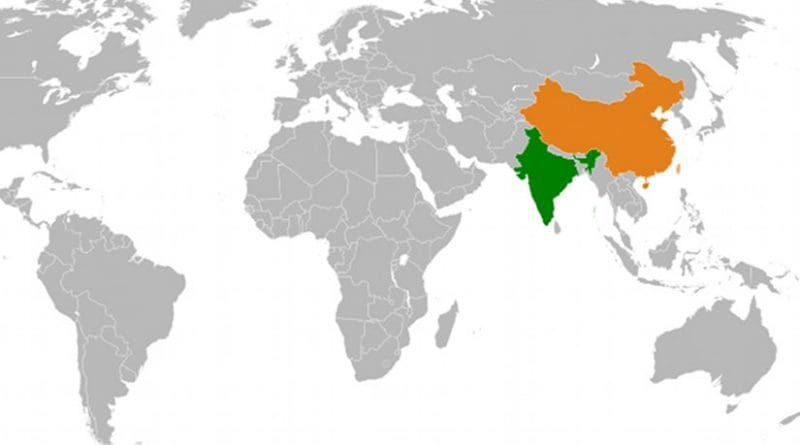China’s OBOR Initiative: More Hype Than Boon For India – Analysis
Sovereignty precedes economy is the political dharma (religion) of India’s foreign policy. India considers that China’s OBOR (One Belt One Road) violates its sovereignty and territorial integrity by indulging in political infringement with the setting up of the China-Pakistan–Economic–Corridor (CPEC) project, the flagship project of the OBOR initiative. CPEC passes through Gilgit-Baltistan in Pakistan occupied Indian territory in Kashmir. India jas refused to be bullied by the Chinese threat that India will be isolated while all its neighbours support OBOR. CPEC is one of the six projects of OBOR.
The truth of the matter is that OBOR is a Chinese domestic challenge, and not a globalone. Impinged by unbalanced regional development, China embarked on OBOR as a correction mode for balanced growth in the regional development between the west and east of China. Beijing aims to connect undeveloped west to Europe through Central Asia on land, dubbed as Silk Road, and connect its developed southern region with South East Asia through ports and railways, dubbed as the 21st Century Maritime Silk Road.
Other reasons that prodded China to the OBOR initiative were the over-capacity and the loss of low cost paradise of manufacturing. The big stimulus package by the Chinese government during the global financial crisis might have saved China from plunging into recession, but it unleashed the side-effect of China dipping into the huge over-capacity in major industries, such as steel, cement and others. These led several state enterprises into a debt trap.
The loss of low cost production in the wake of the Chinese currency yuan’s appreciation led China to adopt the export of high end products and high technology as a policy strategy in Made in China 2025. The Jakarta–Bandung High Speed Railway, grabbed by China against the stiff competition from Japan, is an example of China using OBOR to promote export of high technology and high tech sector products.
OBOR is a new model of globalization centering on infrastructure links. It is different from the erstwhile globalization that was built up by trade and investment expansion through the windows of trade blocks and merger and acquisitions and value chain investments.
Some in India have echoed that it is the interests of India to participate in the new model of globalization, where China will be in the hegemony. They argue that India should avoid isolation from the global partners. India needs desperately Chinese investment to build up its own Make in India initiative into a successful venture for the world’s low cost production hub and generate more employment.
But, the other pocket of think tanks believe that it will be over-optimistic to hope for a gushing flow of Chinese investment if India joins the OBOR. MOUs with OBOR are symbolic. OBOR is not an economic institution and it will not act as a force behind China to invest in India. Chinese companies will invest in India, depending upon specific projects and returns.
Chinese investment in India sparked as a drive of the Go Out policy of China. In 2015, Chinese investment increased eightfold to US$869 million, against US$141 million in 2014. China is the biggest trade partner of India, albeit, China is also responsible for India’s biggest trade deficit. One-fifth of India’s global trade deficit is driven by the Chinese dumping of goods. Eclipsed by over-capacity and sagging economic growth, it is difficult to believe that Chinese investment in India will be swayed, if India does not join OBOR.
In fact, there has been a growing awareness among the Chinese investors for the surge in India’s potential in terms of large domestic market, coupled with high growth in GDP.
The recent decision of Chinese biggest telecom company Huawei Technologies Co Ltd to set up a smartphone manufacturing plant in India shook a Chinese daily. It hinted this shift was a wake up call for China and the country’s loss of competitive edge. It foretold India to be on the way to become the world’s new hub for low cost manufacturing.
Besides Huawei, a number of Chinese vendors are in a rally to also set up their smartphone manufacturing plants in India. Vivo China has already set up a smartphone manufacturing unit in Greater Noida. Xiaomi , ZTE, One Plus , Gionee are in the queue to open their manufacturing shops in India.
Chinese renewable energy firm Chint Group, chemical firm Sopo Group , Shanghai Electric Company and Ding Sen are among the firms looking for substantial investment in India. China’s biggest industrial park developer CFLD is also looking to set up 10 industrial parks in India.
Even the Indian electronic manufacturers and assemblers, who were largely dependent on imports from China, are shifting their procurement strategies from China due to high costs. Instead of importing from China, Indian firms have forayed in establishing their own manufacturing operations in India. Havells , Godrej, Micromax (a handset manufacture), Bosch (auto part maker ) have all started exploring manufacturing operations in India.
The ‘Buy India’ campaign will further reinforce Chinese investment in India. The thrust on local procurement is likely to be the main policy perspective in Make in India initiative. Phase Manufacturing Programme for development of domestic electronic industry and mandatory procurement of railway equipment for Metro rail projects are the good examples of India moving towards the Buy India campaign.
Given the Chinese OBOR initiative is more of a domestic compulsion to upturn that nation’s sagging economy and India’s growing barges on import substitution, the Chinese new model of globalization has little to offer to India.
(Views are personal)

